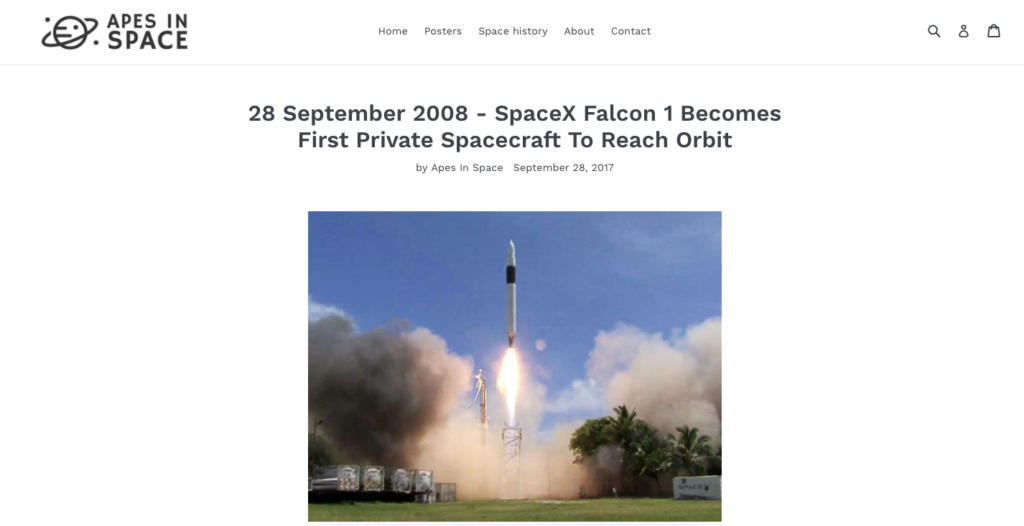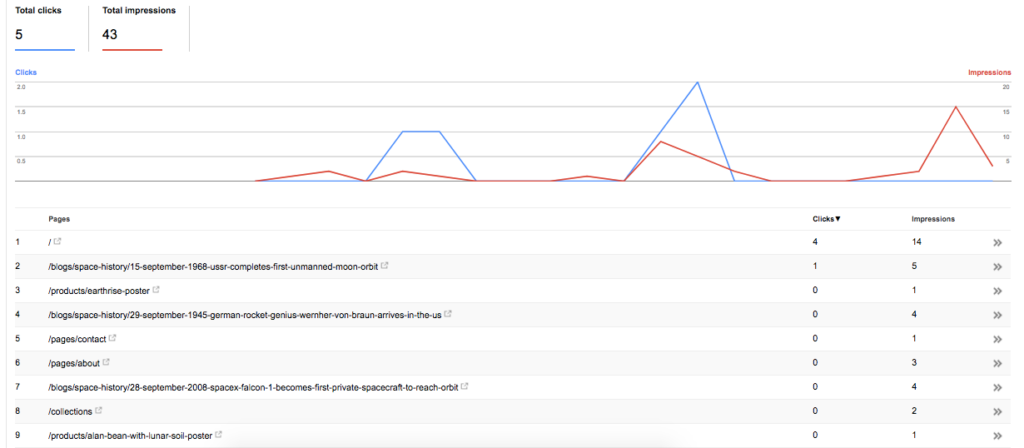Last month I launched my new online store, Apes In Space. Quick recap if you haven’t been following along: I sell posters with cool space images.
As you can read in the launch post, I didn’t do a big bang launch. My goal was to slowly get the word out while I worked out all the kinks.
And even those very modest promotional efforts resulted in the first sale coming in.
But as you know, the real work only starts after the launch.
In this post I’d like to show you how I’ve been improving and promoting my store during September. I’ll cover all of the various essentials that are involved when building a business: Traffic, Financials, Merchandise, Effort & Psychology.
I’ll write these summary posts at the end of every month. I’m calling it the Building From Scratch Series.
Now let’s jump right into the juicy stuff!
Want to stay up to date on what’s going on with this new store? I’ll be sharing everything that happens, so be sure to sign up now!
📈 Traffic
Stats
This graph shows the visitors in September. You can see the slow build up and then the launch peaks pretty clearly. (That second peak is when I wrote my launch post on this blog).

Let’s look at the quality of those visitors:
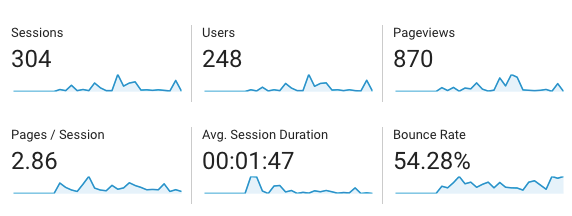
Although the numbers are small, you can see that the visitors look at various pages and spend a good amount of time on the site. Especially because the number of products isn’t very high yet.
Now let’s look at where these visitors came from:
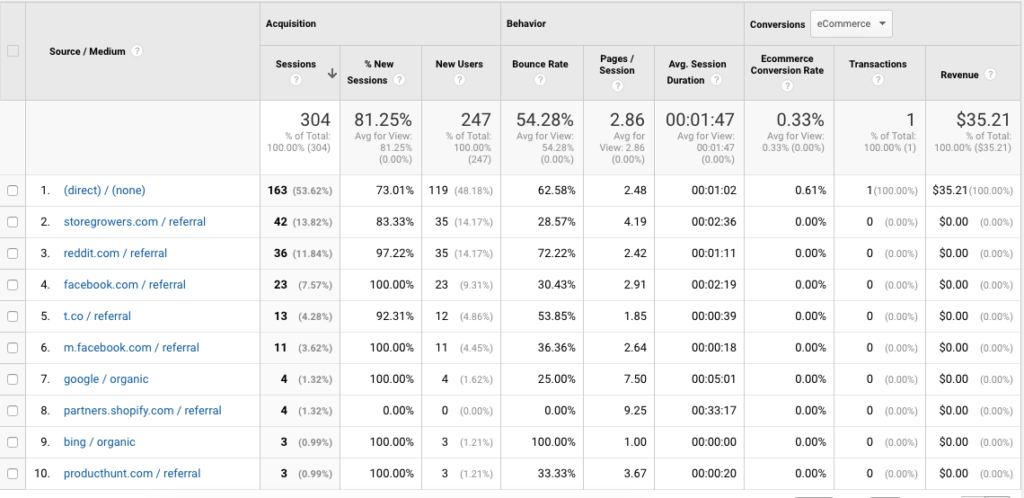
These are mainly the efforts of the launch where I tried to get coverage on a couple of bigger platforms like Reddit and Facebook groups. As I said before the storegrowers.com / referral are mainly curious people that clicked through after the launch post.
Early SEO efforts
I also started something that I hinted at during the initial live stream: Today’s Apes in Space, a daily blog that covers space history events.
One of the keys to a profitable store is have ways through which you can acquire customers cheaply. If you’re 100% dependent on paying Google or Facebook to get traffic and make sales, your margins will hurt.
So for that I needed to get started on building a cheaper marketing channel.
The blog covers a specific event that happened on that particular day in space history. The posters I sell cover these exact moments, so I think the two go hand in hand.
Covering all these events will help the site rank for a lot of very interesting keywords.
To create all of this content, I started by looking through Wikipedia and other webpages that had timelines of the major events. I dumped them all in a Google sheet:
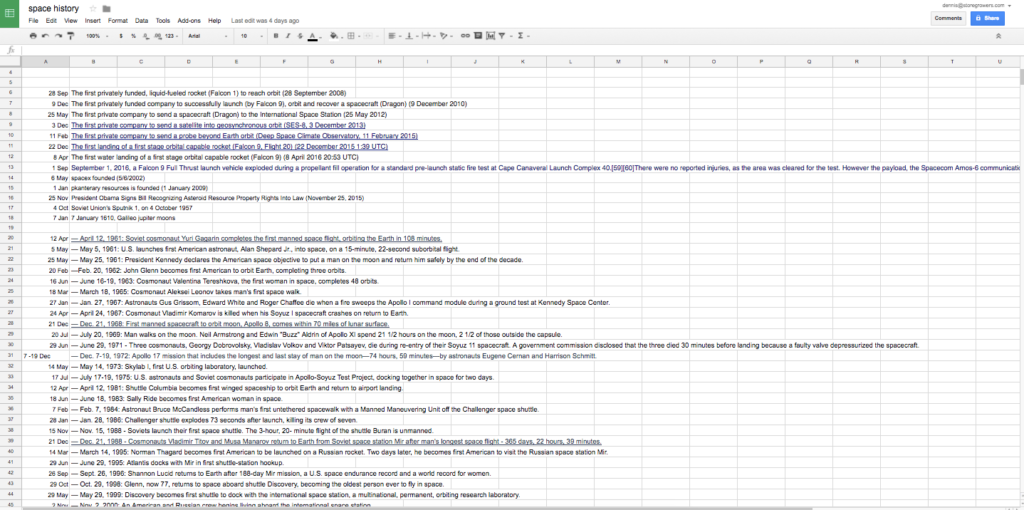
Google Sheet with a lot of space history events (currently got 609 rows)
Committing to writing 365 posts a year is a very daunting task. So to start I decided to try this out from 15 September – 15 October. During September I found 9 events to cover, but I managed to get only 7 posts out there.
Here is one I did about the 9 year anniversary of SpaceX first successful launch:
Although they aren’t amazing pieces of content, each of these takes me quite a long time to put together. Here is my process: read a couple of articles about the event, come up with a mashup with my own twist, add pictures and get it out there.
In the traffic sources table above you can see that I only got 4 organic visitors during September.
That’s not a lot, but SEO efforts need to be evaluated on a much longer time scale. Here I think I’ll only be able to see a real impact in 6 months time. In an earlier project I put out new content for about 6 months. But only after 12 months it really started showing promising results. I had already moved on by then. So my mindset for SEO work is this: do everything I can, but I’m not expecting ANY results from it.
I’m currently only investing my own time in it, which is valuable, but I try to work on it during my off-hours.
I do look closely at Google Search Console, to see if the site gets picked up:
This graph shows how often each of these pages appear and get clicked on from the Google Search results. Over time the number of impressions should go up dramatically.
For the first 15 days of October I’ve got 7 posts planned. Because of their time dependent nature, I’ll try to get a bit ahead of the publishing schedule, to make sure the post goes live early in the day to get the maximum exposure.
Email list
Part of a solid ecommerce foundation is a an email list. The only place people can opt into the list is in my website footer. It’s not very visible so there aren’t a lot of sign ups.
Email subscribers: 3
Over the next few weeks I’ll update the homepage design a bit to make it a bit more prominent. I’m also thinking of adding a popup to capture the email addresses of people that have been going through the catalog but not buying anything. I think those might be interested in “staying up to date when we add new posters”.
I haven’t really though about email marketing yet. But I’m sure I can leverage all of the content I’m creating to send out as a monthly newsletter while also pitching some popular posters.
Social media
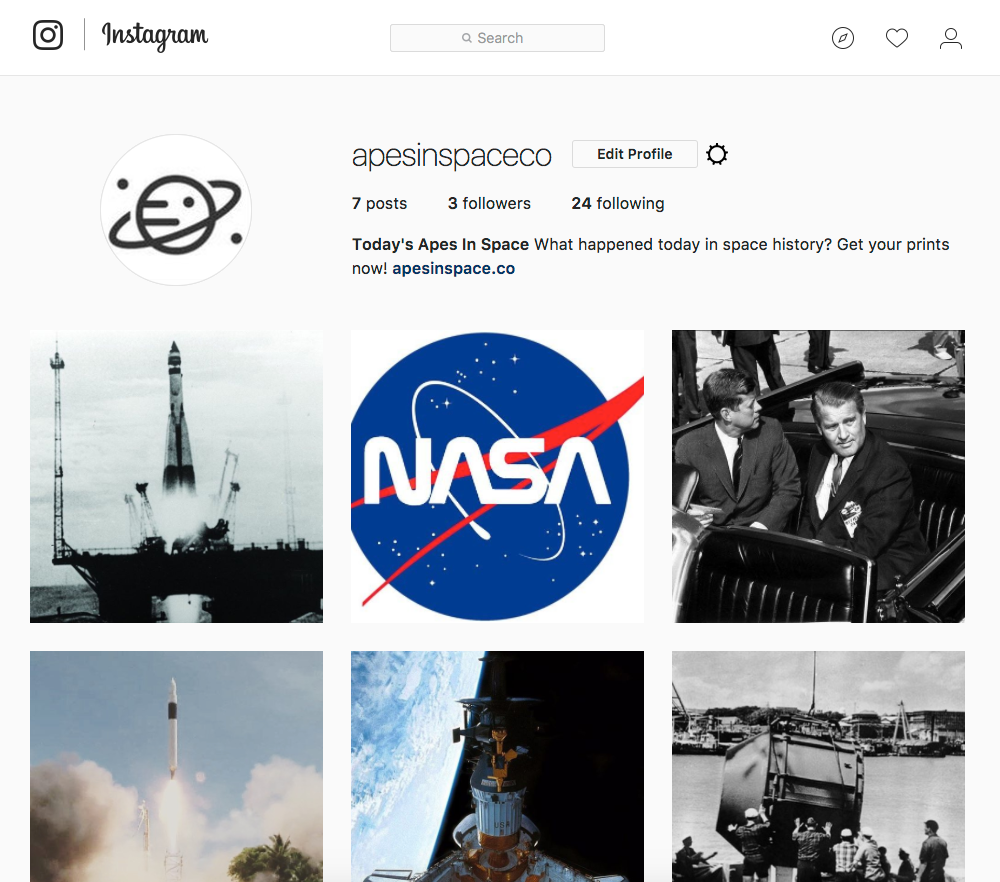
Apes In Space Instagram account
I also set up a Twitter and Instagram account to use this “Today’s Apes In Space” concept on Twitter and Instagram. Other than retweeting with my personal account, I’ve done nothing to improve these accounts.
Follower counts:
- Twitter followers: 3
- Instagram followers: 2
During October I’ll probably add a Facebook page.
💰 Financials
So how much money did the store make in it’s first two weeks?
We had one order that brought in $35.21.

Overview of the financials of the new store
Detailed breakdown:
Revenue: $35.21
Expenses: $65.32
- Custom .co domain: $6.88
- Shopify basic plan: $29
- Printful product charges: $22.4
- Printful shipping charges: $5.73
- Stripe credit card fees: $1.31
Profit : -$30.11
I expected a result to make a small loss at the start. Since the marketing machine isn’t in first gear yet, there haven’t been a lot of visitors or sales. I expect this number to slowly climb out of the red over the next few months.
📦 Merchandise
I didn’t add any new products during September. But I wanted to include this heading in this update because new products are the lifeblood of a successful store. So this section will be a lot bigger in future updates.
⏱ Effort
As part of this ongoing case study I also wanted to include the time I’ve spent on it. I didn’t track the time very closely at the start. But I think the graph gives a good idea of the work involved:
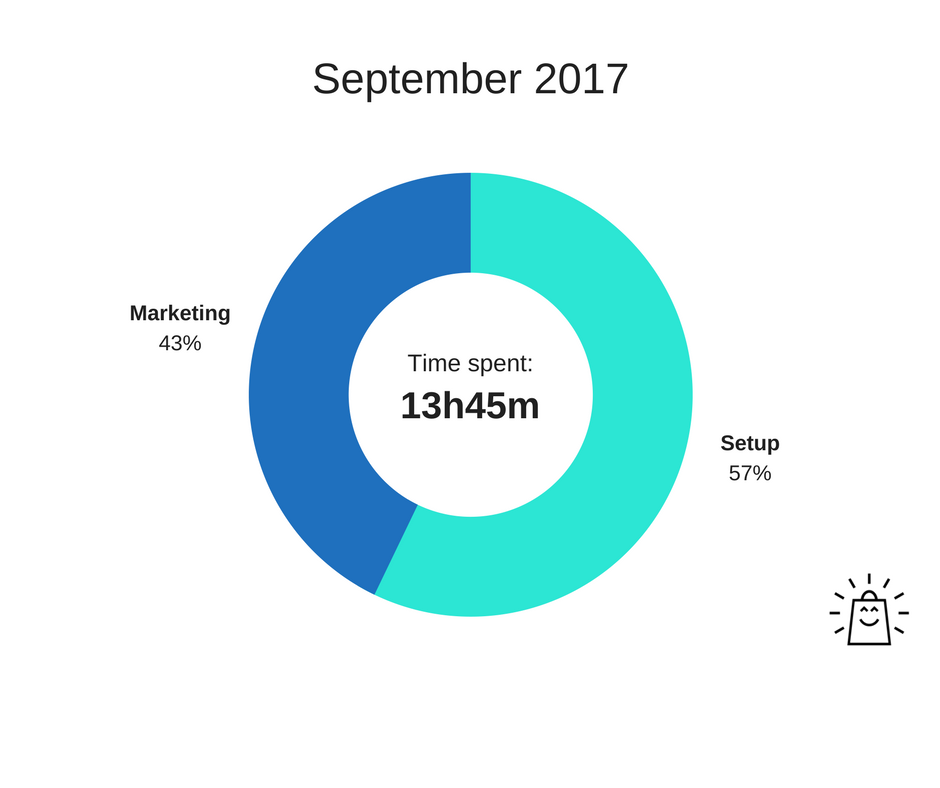
Total time spent on running my online store during September
The initial setup took the most time. Then another 3 hours on the launch marketing efforts and about 2 hours per week on the rest of the content for the blog.
😶 Psychology
As I told in the initial post. I’m pretty nervous to do this project out in the open. That first sale made me feel a bit more comfortable but it’s still very early.
When i announced this project I got a lot of positive feedback from people saying that this project is really helpful. That was a good motivational boost!
Right now my mindset has shifted a bit and my main challenge is to be comfortable that I can’t focus 100% of my time on this new project. I’m currently treating it as I would treat one of my clients: block a couple of specific hours per week to make progress.
That means it will take time to get through all of the test and experiments I’m eager to do. So patience will be key!
🚀 If you want to follow along and see the exact things I do to make this online store a success, be sure to sign up for these updates!
Over to you: what’s the most surprising finding from this post? What’s missing?
